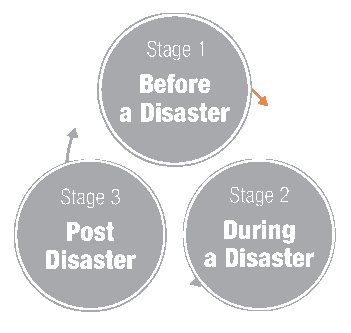

This module familiarises participants with the fundamentals of the aspects of disaster risk management of cultural heritage in the urban environment. It may be combined with the orientation sessions. Most of the content in this module is central to the entire process of disaster risk management and should thus be considered vital to all variations of the course structure. Broadly, this module covers the following topics:

An excerpt from the timetable of the international Training Course 2012, illustrating the structure of Module 1, which included lectures as well as site visits.
Read More...
| INTRODUCTION | Self-Study | Principles, Framework and Risk Analysis at site |
| 9/8 (Sat) | 9/9 (Sat) | 9/10 (Sat) |
| 9:30-10:00(30) Registration |
9:30-11:00(90) Lecture 2 Introduction to the Context of Historic City of Kyoto (YAMASAKI) |
9:30-10:40(70) Lecture 3 Disaster Risk Management of Cultural Heritage - Significance and Core Principles (JIGYASU) |
| 10:00-10:10(10) Opening Address (Chancellor KAWAGUCHI) |
||
| 10:10-11:10(60) Orientation to the Course (JIGYASU) |
Lunch | |
| 11:30-12:40(70) Lecture 1 The Need for Disaster Risk Management for Cultural Heritage in Historic Cities: The Case of Kyoto (TOKI) |
Lunch | to Kiyomizu |
| 12:30-15:00(150) Site Visit 1 Observations of Risks at WHS in Kiyomizudera Temple (Kyoto Pref.) |
||
| Lunch | ||
| 14:00-16:30(150) Presentations by the Training Participants (Resource Persons) |
Self - Study | To DMUCH |
|
17:00-‐19:00(120) Welcome Dinner |
15:30-17:00(90) Workshop 1 Risk Analysis Exercise for Kiyomizu-dera temple, Introduction to Key Terminology (JIGYASU) |
|
| 17:00-18:00(60) Case Study PJ (Resource Persons) |
||
| Kyoto | Kyoto | Kyoto |